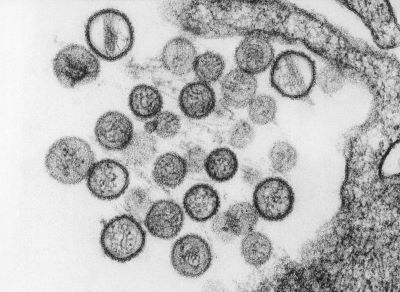
Reservoir host responses following Hantavirus infection
Project Team: Bryce Warner, Arinjay Banerjee
It is estimated that as many as two-thirds of all human pathogens have a zoonotic origin. Among these are several rodent-borne viruses that can cause severe and often fatal infections in humans, but do not cause overt disease in their reservoir hosts. Hantaviruses fall into this category. Hantaviruses pathogenic to humans are often carried by murid and cricetid rodents and Sin Nombre virus (SNV, a North American hantavirus) represents the prototype hantavirus that has a well-studied relationship with its reservoir host species, P. maniculatus, or deer mouse. We have access to a colony of deer mice, one of only two in North America, that allows us to study the relationship between SNV and deer mice.
Infection of deer mice with SNV leads to persistent infection that lasts the lifetime of the animal. Detailed insights into the underlying innate host response to infection that allows for persistence in rodent reservoir host species are lacking. While host responses can lead to tolerance and persistence after infection with viruses with which rodents have co-evolved, we and others have shown that infection of deer mice with other viruses can sometimes lead to clinical signs and even lethality, suggesting the co-evolutionary relationship between virus and host may be critical in determining infection outcome. Our goal is to use our well-established in vivo model of SNV infection in deer mice and newly established in vitro models with host-derived cell lines to attempt to better understand how persistent viral infections of reservoir hosts occur. This work may lead to the discovery of novel approaches to either reduce the burden of zoonotic pathogens in reservoir hosts as well as prevent or treat infections in human hosts.

